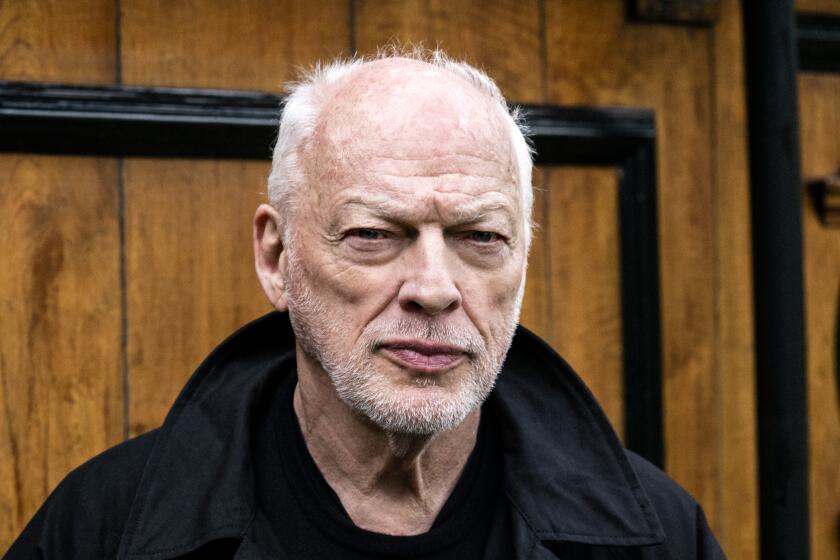Library of Congress to unveil National Recording Preservation Plan
- Share via
A broad-scale plan to preserve the nation’s cultural heritage captured on sound recordings and to make more than a century’s worth of recorded materials more widely available for educational purposes is being unveiled Wednesday at the Library of Congress in Washington.
James H. Billington, the Librarian of Congress, was scheduled to introduce the library’s comprehensive National Recording Preservation Plan, the library’s response to Congress’ passing of the National Recording Preservation Act of 2000. That legislation charged the library with addressing the protection of a vast body of sound recordings that constitute significant cultural and historical documents. The plan contains 32 recommendations, short term and long term, to enhance preservation and access to millions of recordings in light of the deterioration or outright loss of millions more since they were made.
“Our collective energy in creating and consuming sound recordings has not been matched by an equal level of interest in preserving them for posterity,” Billington said in a statement. “Radio broadcasts, music, interviews, historic speeches, field recordings, comedy records, author readings and other recordings have already been forever lost to the American people.”
IN CASE YOU MISSED IT: GRAMMYS 2013: Full coverage | Timeline | Red carpet
Among examples of what has been lost: a wire recording made in the cockpit of the Enola Gay aircraft that dropped the first atomic bomb on Japan near the end of World War II; recordings made by American composer and pianist George Gershwin; the entire recorded news and entertainment archive of one of radio’s leading networks; important recordings by performers including Frank Sinatra and Judy Garland.
“As a composer who has been both informed and influenced by sound recordings, I feel passionately that they are a heritage too easily lost, and one which requires all due diligence to preserve,” composer Stephen Sondheim said in a statement. “It is important to remember that not only do recordings capture individual performances and arrangements but also a great deal of music which was never written down. Once the recordings are lost, the work itself disappears forever.”
Additionally, the library’s statement noted that “experts estimate that more than half of the titles recorded on cylinder records — the dominant format used by the U.S. recording industry during its first 23 years — have not survived.”
“Songs and music are one of the greatest expressions of a nation’s culture,” said singer and songwriter Paul Williams, who also is president of the American Society of Composers, Authors and Publishers, the performance rights organization. “Preserving them through sound recordings, which capture the spirit of a time, is important work. The National Recording Preservation Plan is needed to ensure we have a coordinated plan to preserve our cultural legacy.”
Another massive issue the plan addresses besides physical preservation is opening up access to those materials once they have been preserved.
“Many rights holders have not permitted researchers or the general public to listen to the recordings they legally control outside the limited scope of facilities maintained by legitimate research institutions,” the library’s report states.
Case in point: The Library holds more than 3 million recordings made since the technology to record sounds was developed in the late 19th century, but the vast majority can be accessed only by physically visiting the library’s listening rooms in Washington and Culpeper, Va.
“Despite the development of the Internet,” the library’s report states, “few historical recordings can be made available online legally because of aspects of U.S. copyright law.”
Among the recommendations developed by the National Recording Preservation Board, which consists of musicians, composers, musicologists, librarians, archivists and members of the recording industry, is the application of current federal copyright law to all sound recordings made before Feb. 15, 1972, when the first federal law was enacted to protect sound recordings.
Without a federal umbrella, rights are mired in a web of myriad state and local copyright protections.
“While it might appear to be permanent on the surface, our national recorded heritage is one of the most endangered mediums,” said singer Michael Feinstein, one of the musicians on the National Recording Preservation Board. “Even though people love their music, they assume that because something exists in multiple copies that it is safe from the ravages of time, but we are now keenly aware of the rush to save so much popular music, historical events and singular sound documents, that the mind boggles.”
The Library of Congress National Recording Preservation Plan can be downloaded in its entirety at www.clir.org/pubs/reports/pub156, and eventually will also be on the library’s website, www.loc.gov.
ALSO:
Rare artist interviews at Library of Congress
10 ideas to improve the Grammy Awards ceremony
Beck covers David Bowie’s ‘Sound and Vision’ with 160-piece band
PHOTOS AND MORE
COACHELLA: Complete 2013 lineup
THE ENVELOPE: Awards Insider
PHOTOS: Grammy top winners
More to Read
The biggest entertainment stories
Get our big stories about Hollywood, film, television, music, arts, culture and more right in your inbox as soon as they publish.
You may occasionally receive promotional content from the Los Angeles Times.










